Polystyrene, in its raw bead form, holds incredible potential to be transformed into a versatile, lightweight, and insulating material: expanded polystyrene (EPS). This blog post will guide you through the fascinating process of how to expand polystyrene, taking you from the initial raw material all the way to the finished product.
We’ll delve into the key stages involved, explaining the science and practical steps behind this transformation. Whether you’re a curious hobbyist or a professional looking to understand the manufacturing process, join us as we explore the journey of polystyrene from tiny beads to a myriad of useful applications.
What Is Polystyrene Expansion
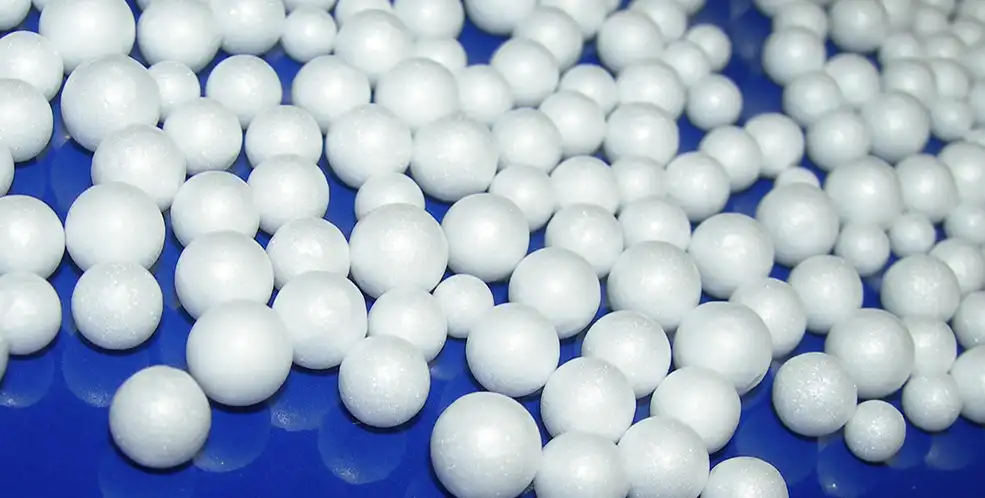
Polystyrene expansion is the process by which small, hard beads of polystyrene are transformed into lightweight, rigid foam, commonly known as Expanded Polystyrene (EPS). This transformation is achieved by heating the beads, typically with steam, which causes a blowing agent (like pentane, already impregnated within the beads) to vaporize and expand.
As the internal gas expands, the polymer softens, and the beads “puff up” to many times their original size. These expanded beads are then molded under further heat and pressure, fusing together to create the final foam product with its characteristic closed-cell structure, which is mostly air.
How to Expand Polystyrene?
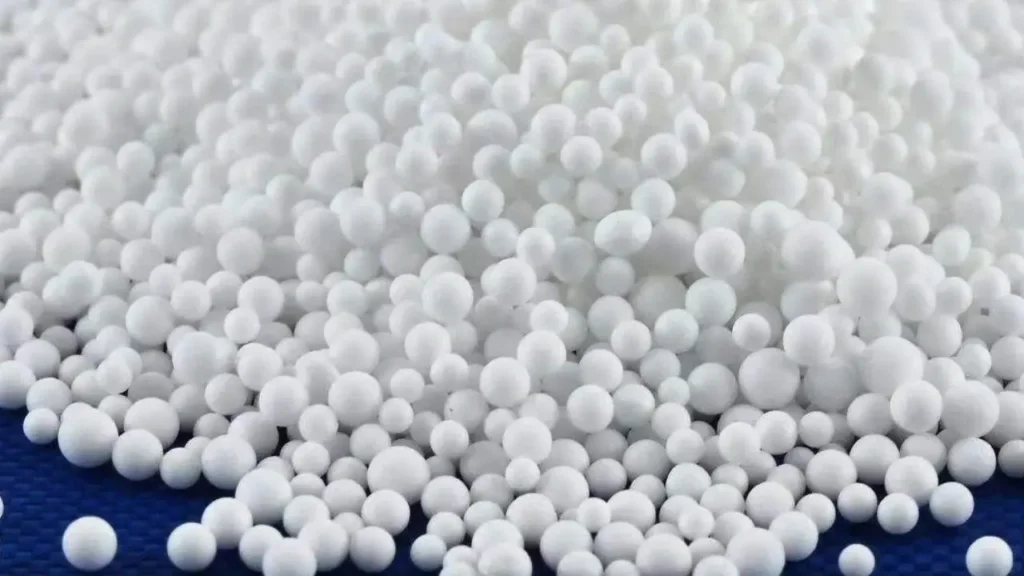
Expanding polystyrene is a sophisticated process that transforms small, dense raw beads into the lightweight, versatile foam known as Expanded Polystyrene (EPS). This transformation relies on precise control of heat, pressure, and time, unlocking its unique properties for a vast array of applications, from intricate packaging to robust construction insulation.
Each stage of the expansion process is critical, influencing the final product’s density, structural integrity, and performance characteristics. Understanding these steps in detail is essential for anyone involved in the production or application of EPS.
Step 1: Pre-Expansion of Polystyrene Beads
The journey of polystyrene expansion begins with the pre-expansion of the raw, unexpanded polystyrene beads, often referred to as “virgin beads.” These EPS beads are typically white, hard, and resemble tiny sugar granules. Crucially, each bead contains a small amount of a blowing agent, most commonly pentane, which is incorporated during the polymerization process.
The pre-expansion stage takes place in a specialized piece of equipment called a pre-expander, which is essentially a agitated vessel designed to introduce steam. As the steam heats the polystyrene beads, the polymer softens, and simultaneously, the pentane within the beads vaporizes and expands rapidly. This internal pressure causes the beads to “pop” and inflate, much like popcorn, increasing their volume significantly—sometimes up to 50 times their original size.
The control over this initial expansion is paramount, as it directly determines the final density of the EPS product. Operators precisely manage parameters such as steam temperature, steam pressure, and the residence time of the beads within the pre-expander. By varying these factors, they can achieve different expansion ratios, resulting in pre-expanded beads of various densities.
For instance, a longer exposure to steam or higher temperatures will lead to a lower-density product (more expansion), while shorter exposure will result in higher-density beads (less expansion). This step is fundamental because the density achieved here largely dictates the thermal insulation properties, compressive strength, and overall performance of the finished EPS.
Step 2: Conditioning/Aging of Pre-Expanded Beads
Following pre-expansion, the now fluffy and highly porous beads are pneumatically conveyed into large storage silos or breathable bags for a crucial stage known as conditioning or aging. This seemingly passive step is, in fact, highly active at a molecular level.
During pre-expansion, the rapid cooling of the EPS beads after leaving the steam environment creates a partial vacuum inside their closed cells. The conditioning period allows ambient air to slowly diffuse into these cells. As air permeates the cell walls, the internal pressure within each bead equalizes with the external atmospheric pressure.
This process is vital for several reasons.
Firstly, it stabilizes the internal pressure of the beads, preventing them from shrinking excessively before the molding stage. If molded too soon, the beads would collapse due to the internal vacuum, leading to an irregular and unstable final product.
Secondly, the absorbed air acts as an internal spring, providing the necessary resilience for the beads to re-expand and fuse effectively during the subsequent molding process. The duration of this conditioning period varies depending on the desired final product density and ambient conditions, typically ranging from a few hours to several days. Proper aging ensures the beads are sufficiently robust and ready for the final shaping and bonding.
Step 3: Molding the Expanded Beads
The conditioned beads are then fed into an EPS foam molding machine, typically a block mold or shape mold. Inside the mold cavity, the beads are again subjected to steam heat. This reintroduces energy, causing the pentane residue within the beads to re-vaporize and the entrapped air to expand. The beads soften further and press against each other and the mold walls, fully expanding to fill the cavity.
As the beads expand, they are forced into intimate contact, and under the combined effect of heat and pressure, their softened surfaces fuse together, creating a strong, monolithic structure with a characteristic closed-cell foam architecture. This process ensures the individual beads are permanently bonded, forming the desired shape and providing the structural integrity of the final product.
Step 4: Cooling
Immediately after the molding process, the newly formed EPS product (whether a block or a custom shape) is still very hot and relatively soft. A critical cooling phase follows, often within the mold itself, achieved by circulating cooling water through the mold jacket. This rapid cooling solidifies the polystyrene, allowing it to retain its precise shape and dimensions.
Effective cooling prevents deformation or collapse of the expanded product as it’s ejected from the mold. It also reduces the internal pressure within the cells, further stabilizing the foam structure and preparing it for handling and subsequent processing. Insufficient cooling can lead to shrinkage, warping, or a brittle product.
Step 5: Finishing and Curing
Once cooled and ejected from the mold, the EPS product may undergo various finishing operations depending on its intended use. For large blocks, this typically involves cutting with hot wires into specific dimensions, sheets, or intricate shapes. Custom-molded products usually require less finishing but might undergo trimming to remove any flash or excess material.
Finally, a curing period is often necessary, especially for larger blocks, allowing any residual moisture to evaporate and for the internal pressure to fully equalize with the atmosphere. This process further stabilizes the EPS, preventing long-term shrinkage and ensuring the product achieves its optimal physical properties, such as dimensional stability and strength, before being packaged and shipped.
Methods of Polystyrene Expansion
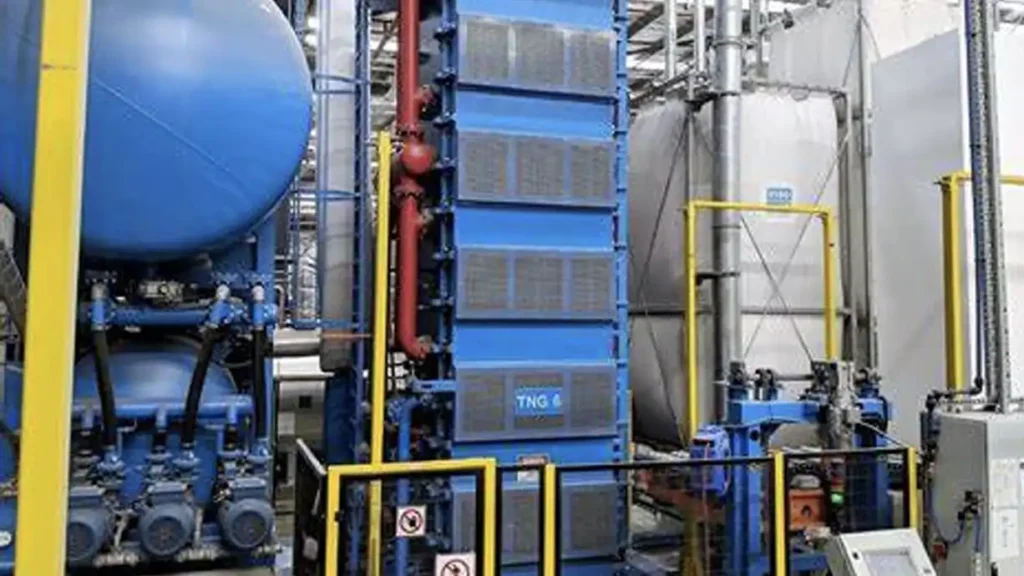
Polystyrene expansion can be achieved through several distinct methods, each offering specific advantages and suited for different production scales and desired product characteristics. Understanding these methods is key to optimizing the manufacturing process.
Batch Pre-Expansion
Batch pre-expansion is a widely used method where a specific quantity of raw polystyrene beads is loaded into a large, agitated vessel. Steam is then injected into the vessel, causing the beads to heat up and the blowing agent (pentane) within them to vaporize and expand. The expansion process is carefully controlled by monitoring temperature and time, and once the desired density is achieved, the expanded beads are discharged. This method is highly versatile for producing various densities and is commonly used for block molding.
Continuous Pre-Expansion
In contrast to batch processing, continuous pre-expansion involves a steady, uninterrupted flow of raw polystyrene beads into and out of the pre-expander. Steam is continuously injected, causing the beads to expand as they move through the system. This method is characterized by high production rates and consistent output, making it ideal for large-scale manufacturing operations that require a constant supply of pre-expanded beads for subsequent molding processes, offering efficiency and automation benefits.
Block Molding
Block molding is a subsequent step after pre-expansion and conditioning, where the expanded polystyrene beads are introduced into a large rectangular mold. Steam is again applied, causing the beads to soften further and fuse together under pressure, forming a solid, monolithic block of EPS foam. After cooling within the mold, the large block is ejected and can then be cut into various sheets, panels, or custom shapes for insulation, packaging, and construction applications.
Shape Molding
Shape molding is a specialized technique where pre-expanded and conditioned beads are introduced into a mold that precisely defines the final shape of the product. Similar to block molding, steam is used to further expand and fuse the beads within the mold cavity. This method is perfect for producing complex, intricate, and custom-designed EPS parts, such as protective packaging inserts, helmets, and decorative elements, directly from the beads without the need for post-molding cutting.
Polystyrene Expansion Advantages
The expansion of polystyrene into Expanded Polystyrene (EPS) offers a wide array of advantages that make it a highly versatile and widely adopted material across numerous industries. Primarily, its exceptional thermal insulation properties are a standout benefit.
The process creates a closed-cell structure where about 98% of the material is trapped air, which is an extremely poor conductor of heat. This allows EPS to significantly reduce heat transfer, leading to substantial energy savings in buildings by minimizing heating and cooling demands, and making it ideal for packaging temperature-sensitive goods.
Beyond its insulating capabilities, expanded polystyrene boasts several other key advantages, including its remarkable lightweight nature, excellent shock absorption, and good dimensional stability. Being largely air, EPS products are incredibly light, which drastically reduces transportation costs and makes handling and installation much easier on job sites.
Its cellular structure also provides superior cushioning, protecting fragile items during transit. Furthermore, EPS is dimensionally stable, meaning it resists changes in size due to temperature fluctuations or moisture absorption, ensuring consistent performance over its long lifespan.
- Recyclability: EPS is fully recyclable, contributing to a circular economy and reducing waste, aligning with growing environmental sustainability goals.
- Excellent Thermal Insulation: Its closed-cell structure, comprising 98% trapped air, provides high R-values, significantly reducing heat transfer and leading to energy efficiency.
- Lightweight: Being primarily air, EPS is incredibly light, which reduces transportation costs, simplifies handling, and minimizes structural load in construction.
- Superior Shock Absorption: The material’s cellular structure makes it an effective cushioning agent, protecting fragile goods during shipping and handling.
- Dimensional Stability: EPS maintains its shape and size well under varying temperatures and humidity, ensuring consistent performance over time.
- Moisture Resistance: Its closed-cell nature resists water absorption, preventing degradation and maintaining insulating properties in damp environments.
- Versatility and Customization: EPS can be easily molded, cut, and shaped into a vast array of forms, allowing for tailored solutions in packaging, construction, and design.
- Cost-Effectiveness: Compared to many alternative materials, EPS is often more affordable to produce and transport, offering economic benefits for a wide range of applications.
Expanded Polystyrene Uses
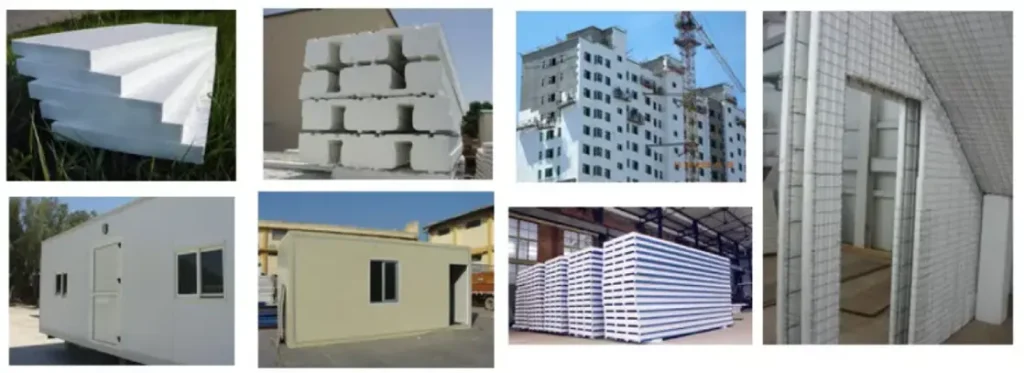
Expanded Polystyrene (EPS) is a remarkably versatile material with a wide range of applications across numerous industries, primarily due to its unique combination of properties, including excellent thermal insulation, lightweight nature, and shock absorption. Its ability to be molded into virtually any shape makes it an ideal choice for both practical and aesthetic uses.
- Horticulture: Utilized for seedling trays and plant propagation due to its lightweight nature and ability to provide aeration for roots.
- Construction: Widely used for thermal insulation in walls, roofs, and floors; as geofoam for lightweight fill in civil engineering projects (roads, bridges, embankments); and in insulated concrete forms (ICFs) for energy-efficient building.
- Packaging: Essential for protecting fragile goods during shipping, including electronics, appliances, glassware, and pharmaceuticals, due to its superior cushioning properties and lightweight nature. Also used for insulated food packaging, such as fish boxes and beverage cups.
- Automotive Industry: Employed for components requiring impact absorption and lightweighting, such as bumper cores, headrests, and seating elements, contributing to both safety and fuel efficiency.
- Arts and Crafts & Set Design: Its ease of cutting, shaping, and painting makes it popular for sculpting, model making, theatrical props, and display elements.
- Buoyancy Applications: Used in flotation devices, pontoons, and other marine applications due to its excellent buoyancy and resistance to water absorption.
Quality Control in Polystyrene Expansion
Quality control is paramount in the polystyrene expansion process to ensure that the final Expanded Polystyrene (EPS) products meet specific industry standards, performance requirements, and customer expectations. It involves a systematic monitoring and testing approach at every stage, from raw material inspection to the finished product, guaranteeing consistency, reliability, and the desired physical properties of the foam.
Step 1: Raw Material Inspection
Quality control begins even before the expansion process, with rigorous inspection of the incoming raw polystyrene beads. Manufacturers meticulously check for consistency in bead size, diameter, and density, as variations can directly impact the uniformity of expansion. Furthermore, the chemical composition, particularly the precise content of the blowing agent (pentane) and any fire retardants or other additives, is verified to ensure it meets specifications.
Any impurities or defects in the raw beads are identified at this stage, as they could compromise the quality and performance of the final expanded polystyrene. Strict adherence to raw material quality standards is foundational, as it directly influences the subsequent expansion behavior and the ultimate physical properties of the EPS product.
Step 2: In-Process Monitoring
During the pre-expansion and molding stages, continuous in-process monitoring is critical to maintaining consistent quality. Parameters such as steam temperature, pressure, and the residence time of beads in the expander are closely controlled and adjusted. For block and shape molding, the molding temperature, pressure, and cooling rates are precisely monitored to ensure optimal fusion of beads and dimensional accuracy.
Deviation from these set parameters can lead to inconsistent density, inadequate fusion, or structural defects in the foam. Automated systems and experienced operators work in tandem to track these variables, making real-time adjustments to prevent quality issues and ensure uniform expansion and proper bonding of the polystyrene beads throughout the production run.
Step 3: Product Testing and Evaluation
Once the EPS products are cooled and, if applicable, cut, they undergo a series of rigorous physical property tests to confirm their quality and compliance with industry standards like ASTM C578 or CAN/ULC S701. Key tests include density measurement, which is crucial for determining thermal insulation and structural performance, and compressive strength tests to assess the material’s ability to withstand loads.
Other vital evaluations include dimensional stability (resistance to shrinkage or expansion), thermal conductivity (R-value), water absorption, and often flammability tests to ascertain fire resistance. These comprehensive tests ensure that the expanded polystyrene products meet the specified performance criteria for their intended applications, guaranteeing their durability, effectiveness, and safety in various uses.
Step 4: Documentation and Traceability
A robust quality control system includes thorough documentation of all inspection and testing results at every stage of the polystyrene expansion process. This creates a comprehensive record for each production batch, enabling full traceability from the raw material to the finished product. Certificates of compliance and test reports are maintained, often including details on process parameters and quality checks.
This documentation is essential for internal quality assurance, auditing, and for providing transparency and confidence to customers. It allows manufacturers to quickly identify and address any potential issues, continuously improve their processes, and demonstrate adherence to national and international quality standards, ensuring a consistently high-quality expanded polystyrene product.
Conclusion
Mastering the expansion of polystyrene from raw beads to a finished product is a fascinating and valuable process with wide-ranging applications. By understanding the principles of heat, steam, and precise control, you can consistently achieve the desired density, shape, and properties for your expanded polystyrene (EPS) materials. This knowledge empowers you to create custom solutions for insulation, packaging, construction, and countless other uses.
The versatility of expanded polystyrene, stemming from its lightweight nature, excellent insulation properties, and shock absorption capabilities, makes it an indispensable material in modern manufacturing. Whether you’re producing prototypes, large-scale industrial components, or specialized packaging, the ability to control the expansion process is key to unlocking its full potential and ensuring high-quality, cost-effective results.
For your large-scale production needs or specific project requirements, we can provide wholesale expanded polystyrene. Located in Qingdao, Shandong, China, we offer a reliable supply of high-quality EPS beads and expanded polystyrene products, supporting your manufacturing processes from raw material to your final, innovative creations.

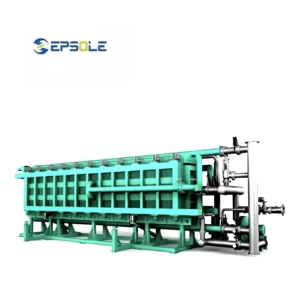
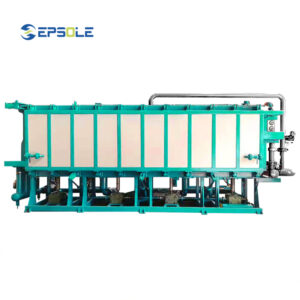

-300x300.webp)

-1-300x300.webp)

